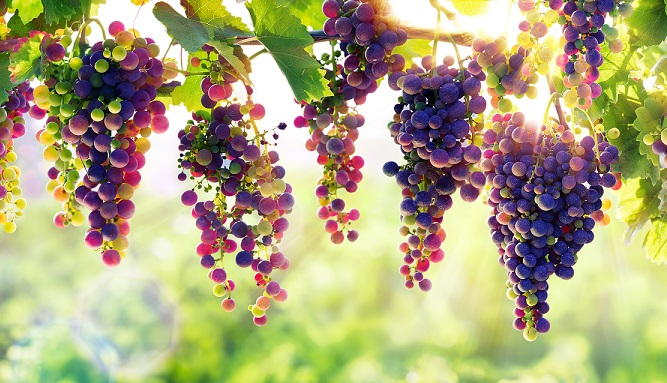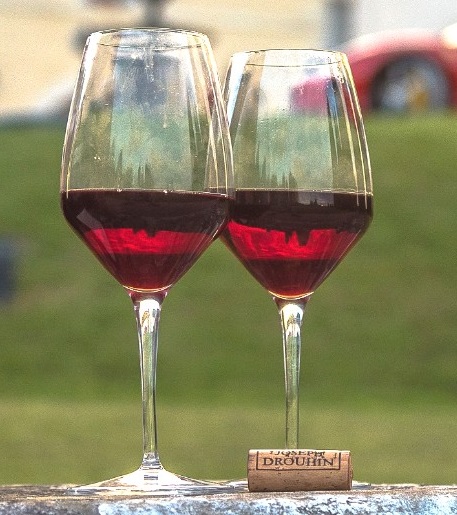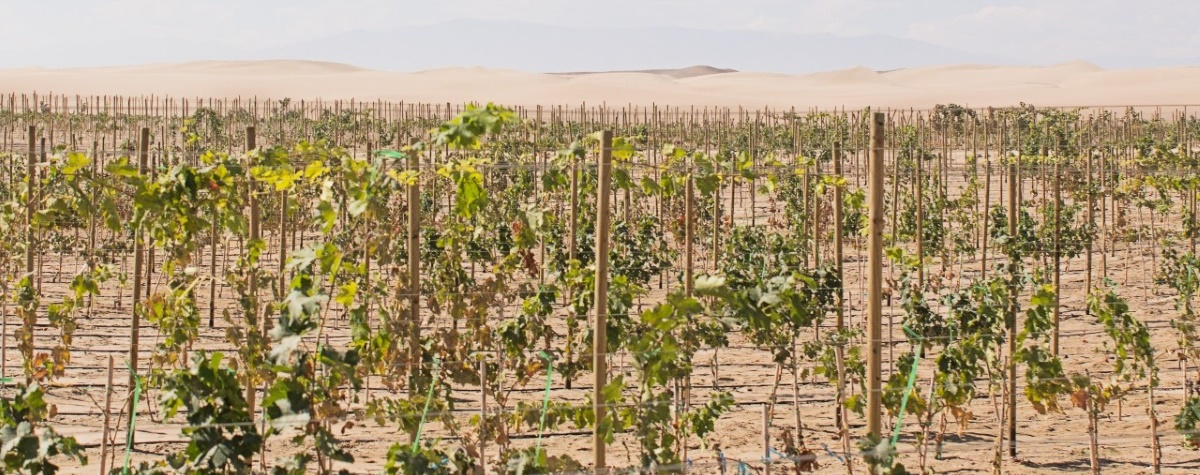‘Understanding the processes driving sugar and colour accumulation separately is a strategic asset’Over the course of grape berry ripening, it is possible to distinguish chemical changes affecting two different fruit compartments:
- The pulp – as berry size increases and ripens, changes affect moisture, potassium, acid or sugar contents;
- The skin and seeds – where a main group of chemical compounds called polyphenols or ‘flavonoids’ undergo changes as well. Among these compounds, anthocyanin, via its molecular composition and concentration, will affect berry skin colour density.
How can berry sugar and colour changes reveal the effect of drought and global warming? And how is that potentially affecting wine taste?
Ripening can be divided into two phases to distinguish separately sugar and colour accumulation rates.Phase 1: Sugar accumulation occurs.
During this early period of ripening, sugars are actively unloading from phloem until berry sugar concentration reaches a maximum value, which is season and varietal dependent. For a given season and a given varietal, the larger the berry volume is, the higher the amount of sugar per berry. Once berry sugar unloading stops, any subsequent increase in sugar concentration is only due to berry water loss, which can happen through berry skin or via the pedicel (ie. the organ linking the berry to the vine). During phase 1, researchers have found that water shortage is the main factor responsible for increasing sugar concentration.
'Colour concentration reaches a maximum... after the berries reach their maximum amount of sugar'Phase 2: Colour accumulation occurs.
Sugars can act as signaling molecules to trigger colour accumulation. Thus, sugar accumulation precedes colour accumulation. During this late period of ripening, colour keeps accumulating in berry cell vacuoles even after sugar unloading has stopped. Colour concentration reaches a maximum, typically observed a few days or a few weeks after the berries reach their maximum amount of sugar. Contrarily to sugars, the amount of colour per berry can quickly degrade while it accumulates or after a maximum value has been reached.

Why colour accumulation patterns can be so variable
Colour accumulation is highly variable based on seasonal conditions, such as light exposure, drought or higher temperatures. Thus, vineyard management practices such as irrigation, harvest date decision or canopy manipulation can influence fruit colour concentration. For instance, research has shown that under moderate water deficit, colour change from green to red can be up to one week faster compared to well-watered conditions.Colour accumulation reaches a peak value AFTER sugar accumulation
At the scale of a berry, sugars and colour accumulate within their respective compartments, at their respective rate until reaching a maximum value. As temperatures get more elevated, colour concentration reaches its maximum value with an increased delay compared to maximum sugar amount. Phase 1 and phase 2 get more disconnected.Postponing harvesting until colour accumulation reaches a peak value is potentially interesting to increase a wine’s potential colour density. Monitoring colour accumulation independently from sugar accumulation may give winemakers new insight to account for the effect of sugar v colour decoupling. However, this is a risky decision, in the context of warmer temperature, because delaying harvest means more sugar is susceptible to concentrate by water loss while colour degradation can occur as soon as berry skin temperature is higher than 35°C. Thus, the risk of postponing harvest is to make wine with a high fruit sugar concentration and lower colour. This can result in wines with higher alcohol, potentially more astringent and harder to sell. In this context, understanding the processes driving sugar and colour accumulation separately is a strategic asset.
The rate of colour accumulation throughout ripening may influence wine colour
A strong, positive relationship exists between colour concentration in grape and in wine (as shown here). However, all colour accumulated in berry skin is never completely extracted into the wine. For this reason, the total amount of colour accumulated in berry skin is always higher than the total amount of colour found in wine. Interestingly, the rate at which colour accumulates in the berry skin has been reported to correlate with wine colour density. In practice, results suggest that colour can be extracted more easily if it has been accumulated faster during phase 2. This observation between fruit colour accumulation kinetics and wine colour density suggests that the rate of colour accumulation before harvest could give an early insight to estimate potential wine colour density.
Why fruit colour is interesting not only for wine colour
Various authors have shown the effects of tannin structure on wine astringency. As colour incorporation into tannins modifies tannins’ structure, wine taste may indirectly reflect the rate of colour accumulation during ripening. Investigating the ability to predict wine style from berry analysis, these authors confirmed that colour is a reliable contributor to wine sensory attributes. Research has shown that colour plays a direct role in the rate of tannins extraction from the fruit into the wine. Thus, when fruit colour accumulation is low but still active, delaying harvest until more colour accumulates can be a rewarding practice if the goal is to increase total wine tannin as reported in this literature.How drought is going to affect fruit, wine colour and wine taste
Under greater water deficit, these authors found that berry colour accumulation and wine colour density can increase. Berry skin acquires a different structure, gets stronger and leads to a higher colour extraction during winemaking. Other authors have reported that higher wine colour density is observed from vines subjected to water deficit treatments.In the context of water scarcity and higher temperatures, wine colour and astringency may partly reflect the balance between drought severity and high temperatures (increasing and decreasing colour).
Winegrower practices affecting vine water stress, berry temperature or harvest decision should have a greater footprint as environmental conditions become more extreme. How is this going to affect wine ageing potential is still a mystery.
Thibaut Scholasch is co-founder of Fruition Sciences, which has offices in France (Montpellier and Bordeaux) and the USA (Napa, CA). Thibaut has worked as a winemaker and consultant for wineries around the globe and is regarded as an expert in controlling the effects of environmental stresses on vine physiology, fruit and wine quality.
Thibaut also contributed this article: Are organic grapes better for winemaking?













.png)






